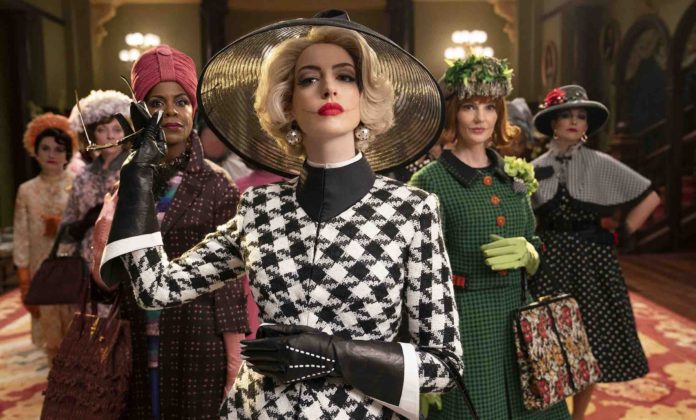Every Halloween, I never fail to reread Roald Dahl’s The Witches, a novel that terrified me as a child with its magical realism, spooky descriptions of neighbourhood witches and nursery rhymes that detail sinister plots against children.
I’ve always been intrigued by Dahl’s ability to convey the macabre through children’s stories, portraying adult characters as villains and innocent children as their victims.
One of my favourite lines, “A witch never gets caught. Don’t forget that she has magic in her fingers and devilry dancing in her blood,” perfectly sets up the witch hunt that makes the novel a thriller, from start to finish.
The 2020 adaptation of The Witches had me excited as soon as I read the cast list. Starring Anne Hathaway as the Grand High Witch and Octavia Spencer as the loveable Grandma, I could not wait to see the powerhouse performances of these two versatile actresses.
Overall, the movie was lacklustre, failing to capture Roald Dahl’s magic in a memorable way. Despite starting off well, the build-up to the movie’s climactic ending felt rushed. I was missing the novel’s darker elements, such as the Grand High Witch’s face reveal and the sinister details of encounters with witches, which make the novel still terrifying for me, years later.
Set in 1960s Alabama, an orphaned boy moves in with his Grandma, whom he describes as a ‘voodoo priestess’ because of her knowledge of medicinal herbs and elixirs. A tough lady with a big heart, she manages to pull her grandson out of his grief. But their lives are shaken when the boy meets his first witch in their local grocery store.
Grandma, a witchophile, recognizes the imminent danger, revealing to her grandson all the tell-tale signs of a witch, who are “demons in human shape” with gloved hands, Cheshire smiles, wigs and flared nostrils. Above all, she reveals that a witch’s sole purpose is to eradicate children from the world.
For safety, the pair leave town to stay at the Grand Orleans Imperial Island Hotel. Unfortunately, their vacation takes a dramatic turn. A hotel convention held by the International Society for the Prevention of Cruelty to Children is an ironic façade for a meeting of the Secret Society of Witches, hosted by the Grand High Witch herself.
The film is narrated by Chris Rock, whose sassy commentary and recognizable voice had me smiling throughout. It was funny, but it didn’t scare me as the book did.
Anne Hathaway did justice to the role of the Grand High Witch, with an exaggerated Scandinavian accent that paid homage to the book’s original setting in Norway and Dahl’s syllable-ridden dialogues for her character. The special effects, be it her fanged mouth or her fiery gaze that incinerates others in blue flames, added to the Grand High Witch’s fearsome look. Some reviews describe her look as ‘camp,’ given her peroxide blonde wig, striking makeup and single-slit gowns. I fully agree.
Directed by Robert Zemeckis, who is well-known for the use of computer graphics and special effects in his films, I was expecting dramatic transformations of the children and the witches into mice, due to the Grand High Witch’s evil concoction against children, the Formula 86 Delayed Action Mouse-Maker. Alas, this did not occur.
There was a lack of uniformity in the graphics. While the two lead characters looked like Disney-esque mice, with their chubby faces and bright eyes, others looked like they were created by a different animation team altogether as their characters were over exaggerated.
There is social commentary in the film regarding the socio-economic status of African Americans in the United States during the 1960s. Grandma’s reason for calling in a favour to stay at the Grand Orleans Imperial Island Hotel was that witches only preyed upon “the poor, the overlooked, the kids they think nobody is going to make a fuss about if they go missing,” which they would not expect to find in a hotel for “rich, white folks.” While the hotel’s staff are predominately Black, the guests are predominately white. In one scene, Grandma is the only Black patron in the hotel’s restaurant.
Providing an African American perspective to Roald Dahl’s original story made it more thought-provoking for me as it cast the witches as women who preyed not just upon the weak, but upon those who remain socially impoverished.
There is an undercurrent of positivity and a belief in ‘goodness always triumphing over evil’ present in both the novel and the movie. Grandma’s ready acceptance when her grandson turns into a mouse is touching, encapsulating Roald Dahl’s famous quote: “It doesn’t matter who you are or what you look like, so long as somebody loves you.”
Featured image from IMDb.






